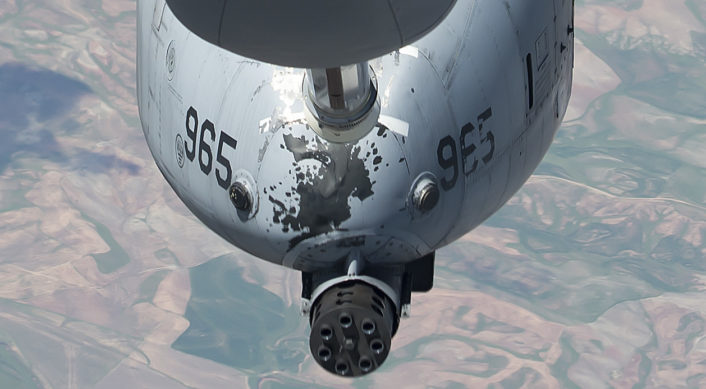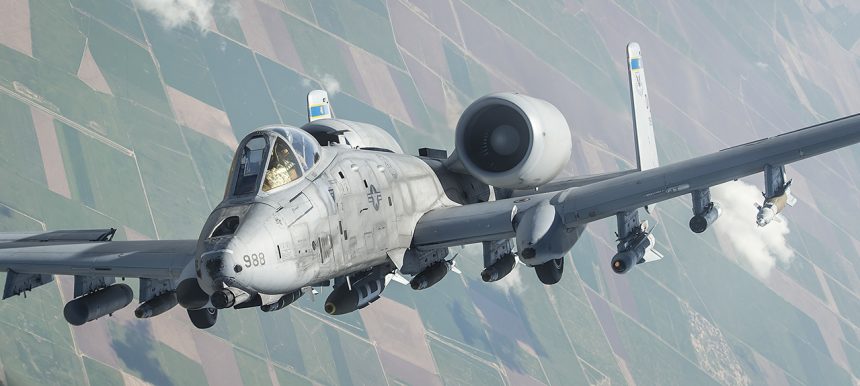Warthogs have started carrying 2,000 lb bombs. You won’t find many photographs of A-10s with GBU-31s.
The photographs in this post were taken from a 340th Expeditionary Air Refueling Squadron KC-135 Stratotanker during an aerial refueling mission in support of Operation Inherent Resolve on Apr. 19, 2017.
Among that mission’s receivers, there was also a U.S. Air Force A-10 Thunderbolt II aircraft.
Interestingly, the images of the “Hog” expose some changes in the weapons loadout of the A-10s involved in the fight against Daesh militants. Indeed, the aircraft depicted in the photos carries one GBU-12 Paveway LGBs (Laser Guided Bombs – on station 1 – the outmost one on the left wing), one AGM-65 Maverick missile (on station 3), one LAU-131 rocket launcher (station 2), three GBU-38 JDAMs (Joint Direct Attack Munitions – station 4, 5 and 9), one GBU-31(V)1/B with MK-84 warhead (station 7) and an AN/AAQ-28 Litening AT targeting pod (station 10).
Station 8 has a GBU-54 laser JDAM whereas the LAU-131 on Station 2 is a LAU-131A/A model used for the new (and very awesome) AGR-20 laser guided rockets.
Among the mix of missiles, guided bombs and rockets, that complement the A-10’s GAU-8 Avenger 30-mm hydraulically driven seven-barrel Gatling-type, the most interesting addition is the GBU-31, a pretty heavy (2,000-lb) general purpose bomb with JDAM (Joint Direct Attack Munition) GPS guidance system intended for mobile and fixed hard (and soft) as well as maritime surface targets.

Although the GBU-31 is a type of weapon certified for use with the A-10 you won’t find many photographs showing other “Warthogs” carrying a 2,000-lb GBU-31: a sign that the coalition may also rely on Close Air Support platforms to hit targets which require a significant destructive power and blast radius.










